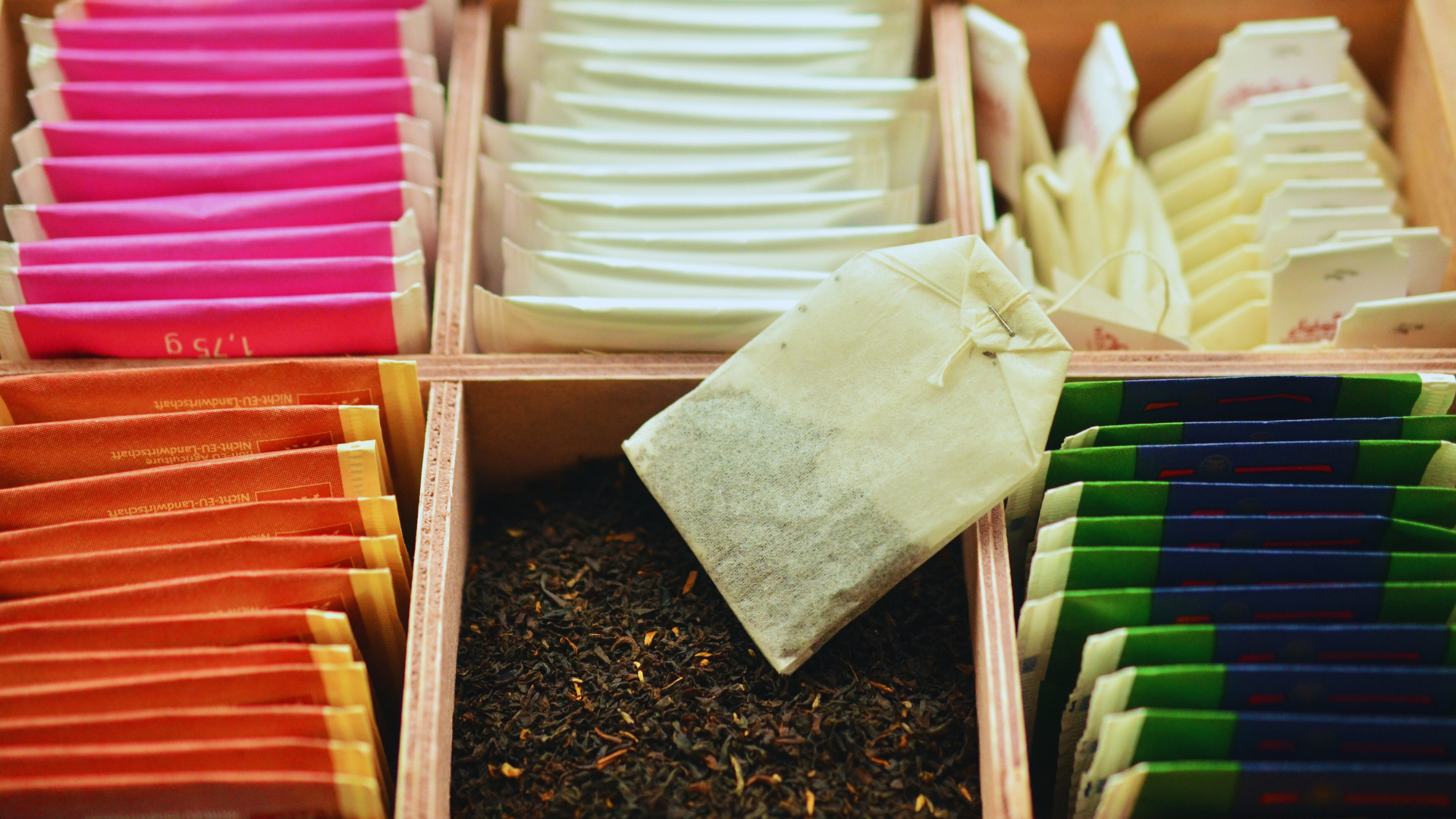Tea bags are a staple in households worldwide, offering a convenient way to enjoy a soothing cup of tea. But once the brewing is done, most used tea bags end up in the trash, their potential overlooked. What if we told you that these humble pouches could serve a multitude of purposes beyond steeping your favorite blend?
From enhancing your garden to refreshing your home, used tea bags are versatile, eco-friendly tools waiting to be repurposed. In this article, we share 10 innovative tea bag hacks that transform your used tea bags into solutions for gardening, skincare, odor elimination, and more. Let’s dive into the creative world of tea bag repurposing and discover how to make every steep count.
Why Repurpose Used Tea Bags?
Before we explore the hacks, let’s consider why repurposing tea bags is worth your time. Tea bags, whether made of paper, plant-based materials, or natural fibers, are packed with nutrients and compounds from tea leaves, such as tannins, antioxidants, and organic matter. These properties make them valuable for a range of applications.
Additionally, repurposing tea bags aligns with sustainable living by reducing waste and maximizing the utility of everyday items. Most of these hacks work best with used tea bags that have been steeped and cooled, though some can use fresh ones. Always ensure the tea bag is free of staples or non-compostable materials (like plastic seals) before repurposing, especially for gardening or skincare. Now, let’s get to the hacks!
1. Boost Your Garden with Tea Bag Compost
Used tea bags are a gardener’s secret weapon. Tea leaves are rich in nitrogen, a key nutrient for plant growth, and their organic matter improves soil structure. To use tea bags in your garden, simply cut open the cooled bags and mix the contents into your compost pile or directly into the soil. The leaves will decompose, releasing nutrients that nourish plants like roses, ferns, or vegetables.
For potted plants, bury a used tea bag near the roots before watering. This slow-release fertilizer provides a gentle nutrient boost without the risk of over-fertilizing. If your tea bags are made of biodegradable materials like paper or PLA, you can bury the entire bag, as it will break down naturally. For acid-loving plants like azaleas or blueberries, used green or black tea bags are especially beneficial, as their tannins help lower soil pH. This hack is a sustainable way to enrich your garden while reducing kitchen waste.
2. Repel Garden Pests Naturally
Tea bags can also protect your garden from pests. The strong aroma of certain teas, such as peppermint or chamomile, acts as a natural deterrent for insects like ants, aphids, and slugs. To create a pest-repelling barrier, place dried used tea bags around the base of plants or along garden borders. Alternatively, steep several used tea bags in a bucket of water for 24 hours to make a tea-infused spray. Strain the liquid into a spray bottle and apply it to plant leaves to ward off pests.
This method is chemical-free and safe for organic gardening. For best results, refresh the tea bags or spray every few days, especially after rain. This hack not only repurposes tea bags but also reduces the need for synthetic pesticides, promoting a healthier ecosystem.
3. Soothe Tired Eyes and Skin
Tea bags are a skincare superhero, thanks to the antioxidants and tannins in tea leaves. Used green or black tea bags are particularly effective for reducing puffiness and soothing irritated skin. After brewing, let the tea bags cool in the refrigerator for 10–15 minutes. Place the chilled bags over your closed eyes for 10–20 minutes to reduce under-eye bags, dark circles, and puffiness. The caffeine and tannins constrict blood vessels and stimulate circulation, leaving your eyes refreshed.
For broader skincare benefits, use cooled tea bags to calm minor skin irritations, such as sunburn, razor burn, or insect bites. Gently press a used chamomile or green tea bag onto the affected area for a few minutes. Chamomile’s anti-inflammatory properties are especially soothing for sensitive skin. You can also open used tea bags and mix the contents with honey or yogurt to create a DIY face mask that hydrates and exfoliates. This hack is a budget-friendly way to pamper your skin with natural ingredients.
4. Eliminate Household Odors
Tea bags are excellent at neutralizing and eliminating odors, making them a natural alternative to chemical air fresheners. The porous nature of tea leaves absorbs unpleasant smells, while their subtle aroma adds a fresh scent. To deodorize your refrigerator, place a few dried used tea bags on a shelf to absorb food odors. For smelly shoes, tuck a dried tea bag (preferably peppermint or lavender) inside each shoe overnight to neutralize odors and leave a pleasant fragrance.
You can also use tea bags to freshen up small spaces like closets, gym bags, or car interiors. For a DIY odor eliminator, fill a small sachet with dried used tea leaves and hang it in the desired area. To tackle stubborn smells, such as those in garbage cans, sprinkle the contents of a used tea bag over the trash before adding a new liner. This hack is simple, cost-effective, and eco-friendly, keeping your home smelling fresh without synthetic fragrances.
5. Clean and Polish Surfaces
Used tea bags can double as a natural cleaning agent for household surfaces. The tannins in black tea are particularly effective at breaking down grease and grime, making them ideal for cleaning glass, mirrors, and wooden furniture. To clean glass surfaces, steep several used black tea bags in warm water for 10 minutes, then transfer the liquid to a spray bottle. Spray the solution onto windows or mirrors and wipe with a lint-free cloth for a streak-free shine.
For wooden furniture, rub a damp used black tea bag gently over the surface to remove dirt and restore luster. The tea’s mild abrasiveness and natural oils polish the wood without harsh chemicals. This hack is perfect for eco-conscious households looking to reduce their reliance on commercial cleaning products while repurposing tea bags.
6. Dye Fabric and Paper Naturally
Tea bags offer a creative way to dye fabrics and paper, adding a vintage or rustic aesthetic to your projects. Black tea produces rich brown tones, while hibiscus tea yields pinkish hues, and green tea creates subtle yellow-green shades. To dye fabric, steep 5–10 used tea bags in a pot of hot water for 15 minutes to create a strong dye bath. Soak the fabric (natural fibers like cotton or linen work best) in the liquid for 1–2 hours, stirring occasionally for even coloring. Rinse lightly to set the color, then air-dry.
For paper, dip used tea bags in warm water and gently rub them over paper to create an aged, sepia-toned effect. This is perfect for scrapbooking, journaling, or crafting. Experiment with different teas to achieve unique shades, and enjoy a sustainable, chemical-free dyeing process that repurposes your tea bags creatively.
7. Relieve Minor Aches and Pains
Tea bags can provide natural relief for minor aches, bruises, or swelling. Chamomile and peppermint tea bags, in particular, have anti-inflammatory and soothing properties. To ease sore muscles or joint pain, warm a used tea bag slightly (ensure it’s not too hot) and apply it as a compress to the affected area for 10–15 minutes. The warmth and herbal compounds help relax muscles and reduce discomfort.
For bruises or minor swelling, chill a used green or chamomile tea bag and place it on the skin. The antioxidants and tannins reduce inflammation and promote healing. This hack is a gentle, natural alternative to over-the-counter remedies, making it ideal for those seeking holistic wellness solutions.
8. Enhance Cooking and Baking
Tea bags can add unique flavors to your culinary creations, turning used bags into a secret ingredient. The contents of used tea bags, especially herbal or flavored varieties, can be sprinkled into recipes for subtle depth. For example, mix the leaves from used chai tea bags into cookie or cake batter for a warm, spiced flavor. Add used jasmine tea leaves to rice or quinoa for a floral aroma.
You can also infuse broths or soups with used tea bags. Steep a used Earl Grey or green tea bag in simmering broth for a few minutes to impart a delicate flavor. Remove the bag before serving. This hack is a creative way to reduce food waste while experimenting with new tastes in your kitchen.
9. Create DIY Air Fresheners
Transform used tea bags into homemade air fresheners for a sustainable alternative to store-bought options. Dry used tea bags thoroughly, then add a few drops of essential oils, such as lavender, eucalyptus, or citrus, to the leaves. Place the scented tea bags in small fabric pouches or jars and set them in drawers, bathrooms, or cars for a natural, long-lasting fragrance.
For a decorative touch, hang tea bag sachets in your home or use them as drawer fresheners to keep clothes smelling clean. This hack is customizable, budget-friendly, and eco-conscious, allowing you to enjoy the benefits of aromatherapy without waste.
10. Prevent Rust on Kitchen Tools
Tea bags can help protect your kitchen tools from rust, thanks to the tannins in tea, which inhibit oxidation. To prevent rust on cast iron pans or metal utensils, rub a damp used black tea bag over the surface after cleaning and drying. The tannins create a protective layer that reduces moisture exposure. Wipe off any excess tea residue and store the tools in a dry place.
This hack is especially useful for maintaining cast iron cookware, which is prone to rusting if not properly cared for. It’s a simple, natural way to extend the life of your kitchen tools while repurposing tea bags.
Tips for Successful Tea Bag Repurposing
To make the most of these hacks, keep these tips in mind:
- Store Used Tea Bags Properly: After brewing, squeeze out excess water and store used tea bags in an airtight container in the refrigerator for up to a week to prevent mold. For hacks requiring dry tea bags, air-dry them completely before use.
- Check Tea Bag Materials: Ensure your tea bags are biodegradable and free of plastic or staples, especially for gardening or skincare applications. Brands like Pukka or Clipper often use compostable materials.
- Experiment with Tea Types: Different teas offer unique benefits. Green tea is rich in antioxidants, chamomile is soothing, and peppermint is refreshing. Tailor your hack to the tea’s properties.
- Combine Hacks: Get creative by combining hacks, like using tea-dyed fabric to make air freshener sachets or adding composted tea leaves to your pest-repelling garden.
Conclusion: A Sustainable Second Life for Tea Bags
The humble tea bag is far more than a one-use item. From nourishing your garden to pampering your skin, these 10 creative hacks demonstrate the versatility of used tea bags in everyday life. By repurposing tea bags, you’re not only saving money and reducing waste but also embracing a more sustainable lifestyle that aligns with the values of OnoTea.com. The next time you brew a cup, think twice before tossing that tea bag—instead, let it work its magic in your garden, home, or skincare routine.
At OnoTea.com, we’re passionate about celebrating tea in all its forms, from the perfect steep to the innovative reuse of every leaf. Try these hacks, share your favorites, and join us in making every tea bag count. Here’s to sipping sustainably and living creatively!

